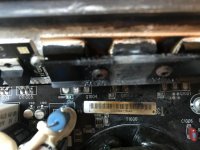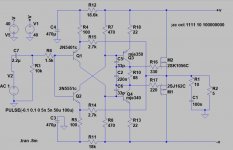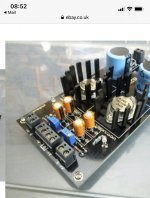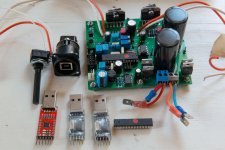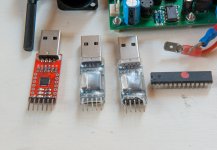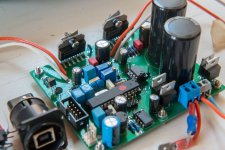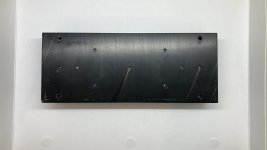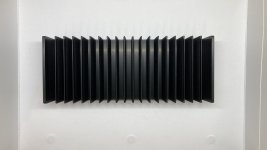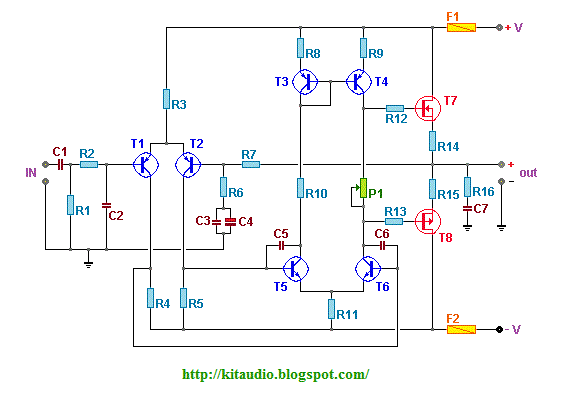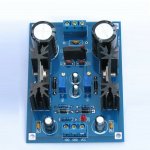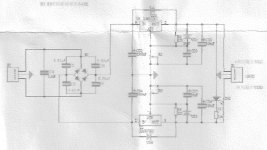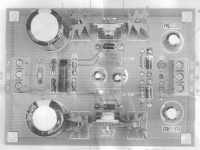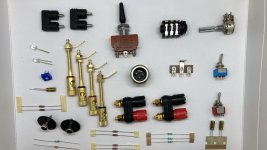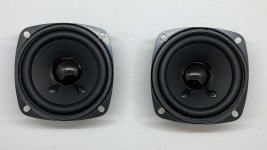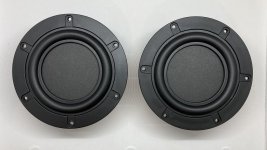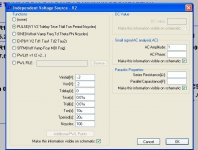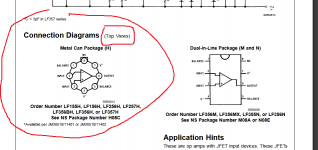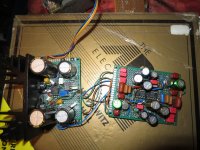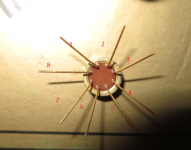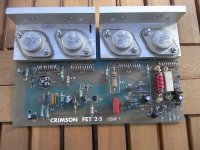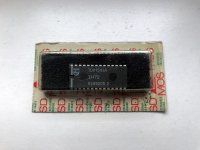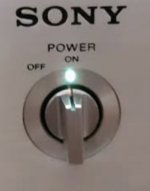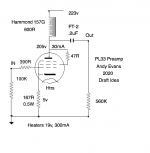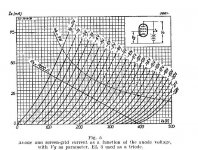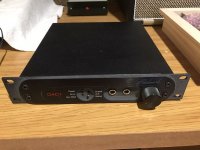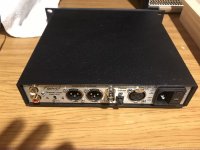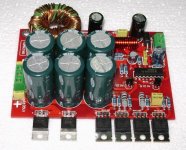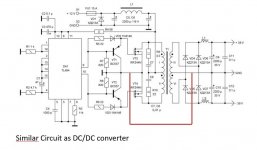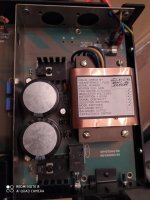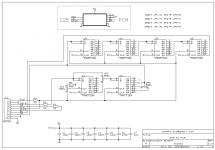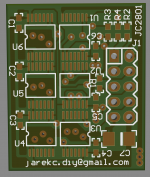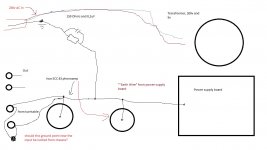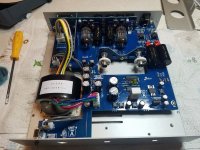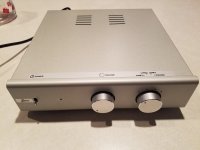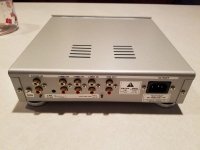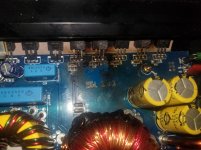Playstation 1 as CD transport (SPDIF output)
- By audiocats
- Digital Source
- 35 Replies
I have some playstation-1's, some modded some stock. During the mods I managed to zapped the audio section of one board..... Maybe it can still work as a transport, I thought, all I have to do is pipe out the signal and use it to drive an external dac. It turned out the AKM chip's input signal uses Eiaj format, while I need I2s format to drive a TDA1541 dac.
Maybe there is a select pin in some chip upstream that can set Eiaj / I2s? Well, the research turned up nothing, I don't have a schematic and couldn't find datasheet for some of the chips.
And then there is this CXD2510Q chip in the upper left corner of the board. I downloaded the datasheet, and was looking at the pin out's. According to the datasheet, Pin#60 is "Dout", Pin#59 is the pin to enable it.
...
...
Dout?
hmmm, like the Dout pin in a CXD2500?
...
...
... somehow I remember somebody somewhere mentioned the Dout in the cxd2500 is SPDIF, maybe this 2510Q has spdif output as well?.....🙄
....
....
So here came my little experiment. I still have a stock SCPH-1001, which I don't mind adding a digital-output to it ("stock" means stock sound, no modification to the audio out). might as well use that. If the experiment goes wrong and kills board, I will only be out 10 ~15 bucks.
The first step is figure out how to get to pin60 and p59. I pulled the CXD2510Q off my "completely dead" 1001 board (long story short, the board got destroyed when I accidentally shorted the 7.6v line to the 3.6V during an all-linear external power supply upgrade), and looked at the trace under the chip. Pin 59/60 are not connected to anywhere. See photo. Signals will have to be tapped directly from the pins.
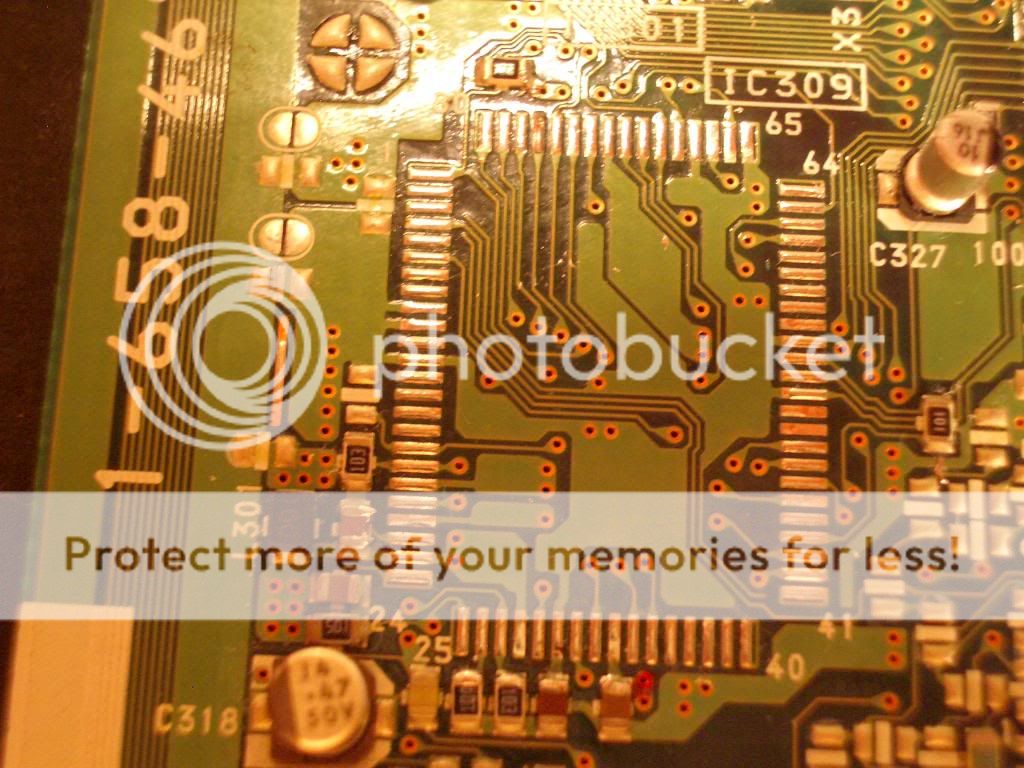
The next step is to lift the pins off the pad for easier access. I suppose you can solder wires directly to the pins but the chance of bridging is pretty high, so I chose to lift the pins. Pin 59/60 were carefully lifted up using a fine tip dental pick while the soldering iron tip was touch the pad. It can be done without magnification, though I did use a magnifier to check and make sure there is no solder bridge under the pin.
Now connect the wires to the pins. To prevent stressing the pins, I added a little pieced of perf board as anchor (there is a piece of wire coming up from the underside and soldered to two pads of the perf board, then the anchor wire is soldered to a large pad on the 1001 board), connected thin 28awg wires between the anchor board and the lifted pins.
piping the SPDIF signal out:
-- A 300 ohm resistor is soldered to the pad (on the anchor board) that links to pin60, the other end of this resistor goes to the center pin of digital-out RCA socket;
-- A 10k resistor is soldered to the pad that links to pin59, the other end of this resistor is soldered to the upper pad of L301 (left side of CXD2510Q), which is V+. This enables pin60's output.
-- A 100 ohm resistor is connected between the digital-out socket's center pin and the ground.
-- of course, the socket's barrel is connected to the ground.
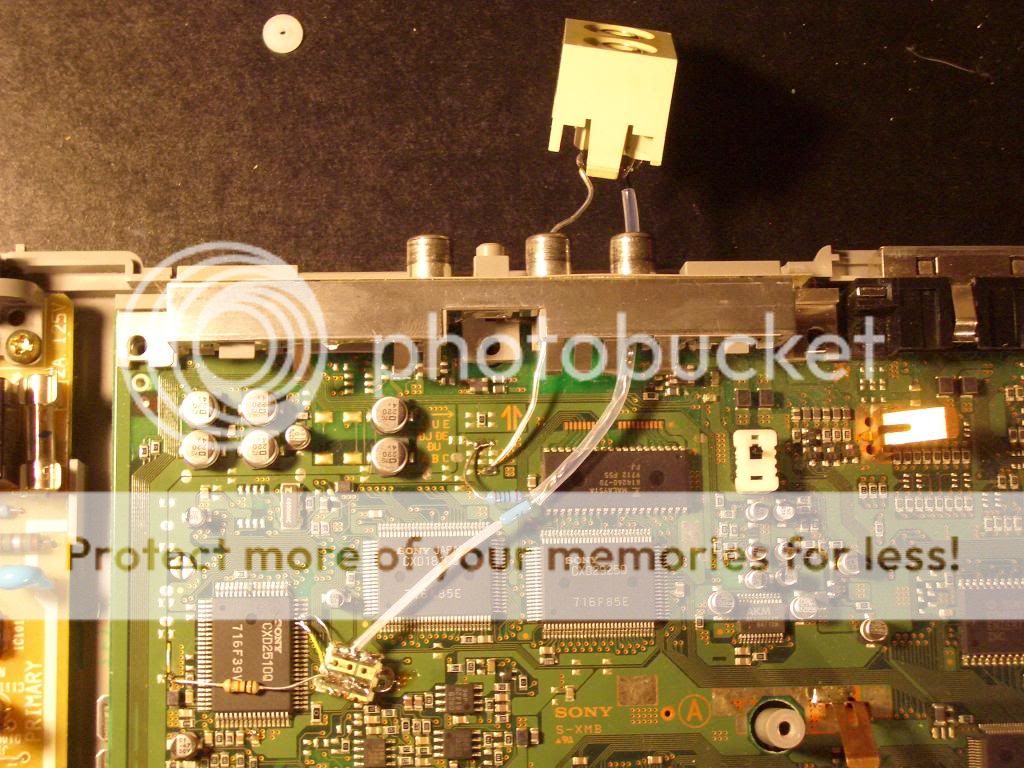
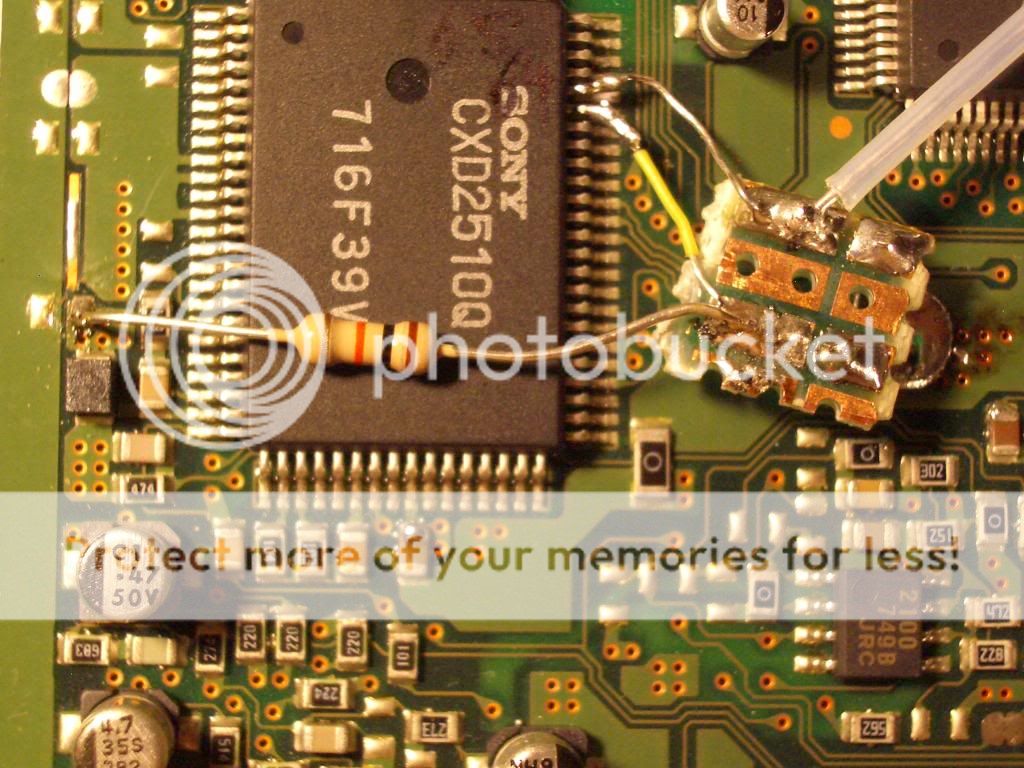
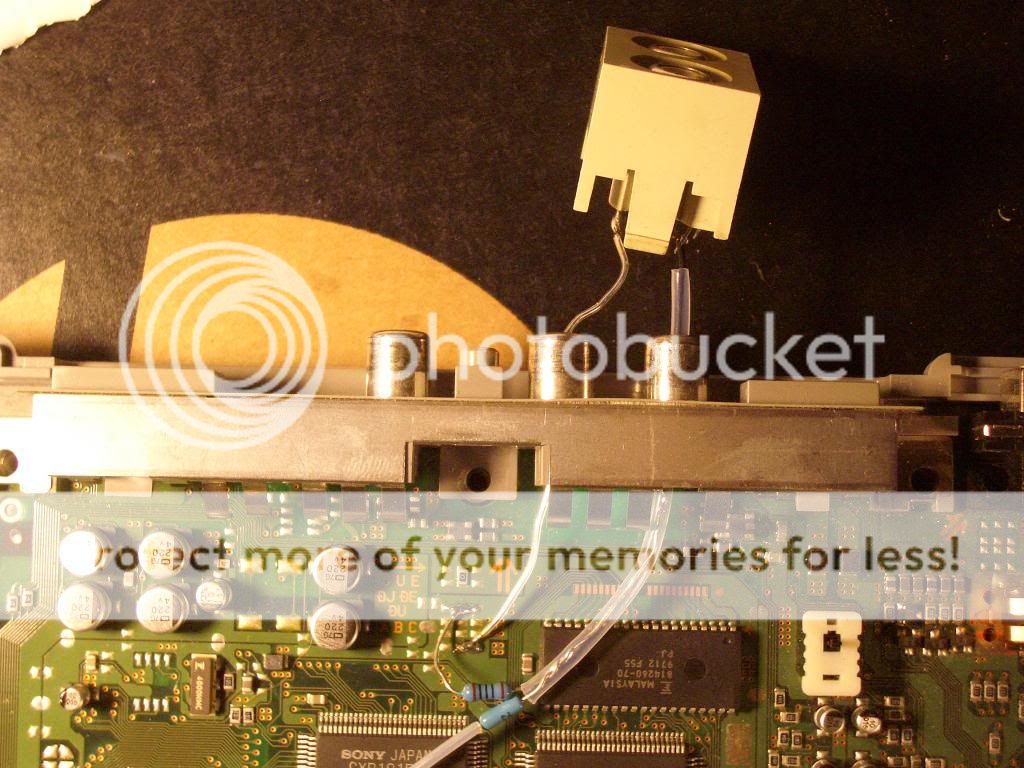
Put everything back together, connect a digital cable to my little modded Zhaolu D2C DAC --> HCC86 hybrid amp --> Fostex T50rp headphones, and press "play" on the playstation remote........😱 😀 Music is playing.. And the sound is smooth, much smoother than the analog-out (yes, my modded D2C is smooth... 😀)
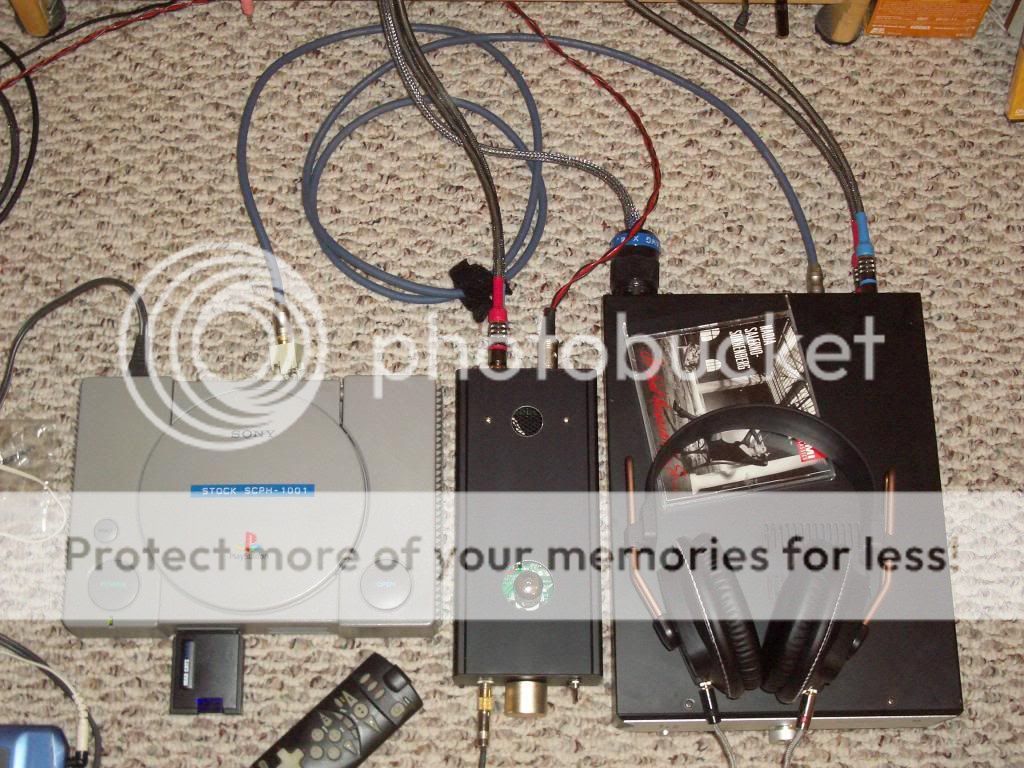
There we have it, folks, the PS1 digital-out mod. You only have to mess with two pins, add two pieces of thin wire, three resistors, one RCA socket and one ground wire. Simple as that😉 The playstations are cheap and plentiful, they are well built, reliable, laser adjustments are easily accessible. Not to mention a remote control can be added easily. What is not to like? Everybody should have at least one PS1 transport, don't you think? 😀
Now how about an Ubber PS1 CD transport? anybody? The spinning transport thingey can be easily mounted to a heavy block of something (wood, copper, granite, gold) and suspended via.... anything from rubber band to coil spring to magnetic levitation devices; use linear supply to provide power to the board (better yet, battery)..... come on, push the envelops, the sky is the limit 😀
Maybe there is a select pin in some chip upstream that can set Eiaj / I2s? Well, the research turned up nothing, I don't have a schematic and couldn't find datasheet for some of the chips.
And then there is this CXD2510Q chip in the upper left corner of the board. I downloaded the datasheet, and was looking at the pin out's. According to the datasheet, Pin#60 is "Dout", Pin#59 is the pin to enable it.
...
...
Dout?

hmmm, like the Dout pin in a CXD2500?
...
...
... somehow I remember somebody somewhere mentioned the Dout in the cxd2500 is SPDIF, maybe this 2510Q has spdif output as well?.....🙄
....
....
So here came my little experiment. I still have a stock SCPH-1001, which I don't mind adding a digital-output to it ("stock" means stock sound, no modification to the audio out). might as well use that. If the experiment goes wrong and kills board, I will only be out 10 ~15 bucks.
The first step is figure out how to get to pin60 and p59. I pulled the CXD2510Q off my "completely dead" 1001 board (long story short, the board got destroyed when I accidentally shorted the 7.6v line to the 3.6V during an all-linear external power supply upgrade), and looked at the trace under the chip. Pin 59/60 are not connected to anywhere. See photo. Signals will have to be tapped directly from the pins.

The next step is to lift the pins off the pad for easier access. I suppose you can solder wires directly to the pins but the chance of bridging is pretty high, so I chose to lift the pins. Pin 59/60 were carefully lifted up using a fine tip dental pick while the soldering iron tip was touch the pad. It can be done without magnification, though I did use a magnifier to check and make sure there is no solder bridge under the pin.
Now connect the wires to the pins. To prevent stressing the pins, I added a little pieced of perf board as anchor (there is a piece of wire coming up from the underside and soldered to two pads of the perf board, then the anchor wire is soldered to a large pad on the 1001 board), connected thin 28awg wires between the anchor board and the lifted pins.
piping the SPDIF signal out:
-- A 300 ohm resistor is soldered to the pad (on the anchor board) that links to pin60, the other end of this resistor goes to the center pin of digital-out RCA socket;
-- A 10k resistor is soldered to the pad that links to pin59, the other end of this resistor is soldered to the upper pad of L301 (left side of CXD2510Q), which is V+. This enables pin60's output.
-- A 100 ohm resistor is connected between the digital-out socket's center pin and the ground.
-- of course, the socket's barrel is connected to the ground.



Put everything back together, connect a digital cable to my little modded Zhaolu D2C DAC --> HCC86 hybrid amp --> Fostex T50rp headphones, and press "play" on the playstation remote........😱 😀 Music is playing.. And the sound is smooth, much smoother than the analog-out (yes, my modded D2C is smooth... 😀)

There we have it, folks, the PS1 digital-out mod. You only have to mess with two pins, add two pieces of thin wire, three resistors, one RCA socket and one ground wire. Simple as that😉 The playstations are cheap and plentiful, they are well built, reliable, laser adjustments are easily accessible. Not to mention a remote control can be added easily. What is not to like? Everybody should have at least one PS1 transport, don't you think? 😀
Now how about an Ubber PS1 CD transport? anybody? The spinning transport thingey can be easily mounted to a heavy block of something (wood, copper, granite, gold) and suspended via.... anything from rubber band to coil spring to magnetic levitation devices; use linear supply to provide power to the board (better yet, battery)..... come on, push the envelops, the sky is the limit 😀

